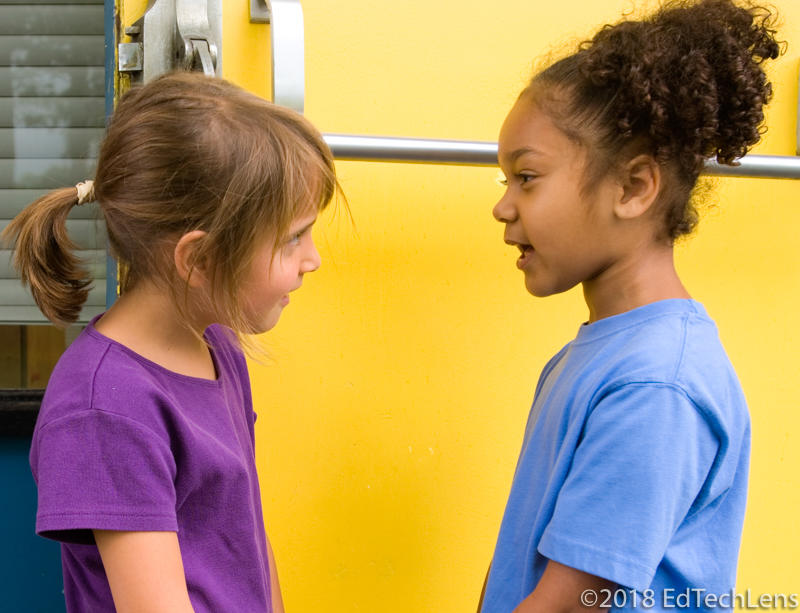
Replacing Teacher Presentation with Student Motion
The general consensus among neuroscientists and educators is that a child can stay focused for about one minute per year of age. “So if you’re presenting to a class of third graders for 25 minutes, you’re not conveying 25 minutes of information,” says Mike Roberts. “They’ve listened for nine or 10 minutes and then their minds have been elsewhere for 15.”
Roberts recommends minimizing presentation time and then getting kids moving. “If you can get them to use their hands, or get them physically involved in some other way, their focus can last much longer.”
In his book, The New Science Teacher’s Handbook: What You Didn’t Learn from Student Teaching, Roberts offers a variety of activities for engaging students and boosting retention.
Walk ‘n’ Talk
One of these, Walk ‘n’ Talk, involves taking students outside, having them pair up and giving them questions to discuss. Roberts lines up his students on the sidewalk, provides parameters for the activity, and then they’re off, spending a minute and a half to two minutes on each question. He walks among the pairs, listening for key words. After time’s up, students change partners, continue walking, and discuss a new question.
After 15 minutes, students return to the classroom and Roberts asks students how their various partners answered the questions. “So they’re working on listening skills too because they’re sharing what their partner said. This also gives me a chance to hear what they have to say and then either solidify that or correct.”
Musical Chairs
A similar approach is a form of musical chairs. Instead of lecturing, Roberts composes six or seven questions or topics he wants to cover, seats students in groups of four and gives them a couple minutes to discuss. Then everyone stands and he plays music for thirty seconds while they walk around the room. Then everyone sits again at a new table with new people.
Different Ways of Understanding
“The problem with lectures is we give info we think students need and then at the end we ask if there are any questions, and there’s not because most kids have checked out,” Roberts says. “But in talking to their own peers in small groups, they’re not only more engaged, but more open to saying, ‘I don’t understand that.’ They’re also getting different information from a variety of different people with different perspectives – and the more ways ideas are presented, the more ways they’re shared, the better chance the student understands it.
“When I lecture, I explain things in ways that are crystal clear to me, but students may not understand it that way. Because I say it doesn’t mean they’re connecting with it. Students speak a different language and when they hear a peer talking, the info is getting to them via an alternate path.”
About Mike Roberts: A middle school English teacher for nearly twenty years, Roberts has received numerous awards, including the 2014 Utah English Teacher of the Year. He’s the author of Hacking Classroom Management - 10 Ideas to Help You Become the Type of Teacher They Make Movies About and co-author of The New Science Teacher's Handbook: What You Didn't Learn From Student Teaching. In addition to teaching middle school, he instructs college students on classroom management and literacy in the content areas. He has served on many educational committees, and has been a featured speaker at dozens of state, regional, and national conferences.

